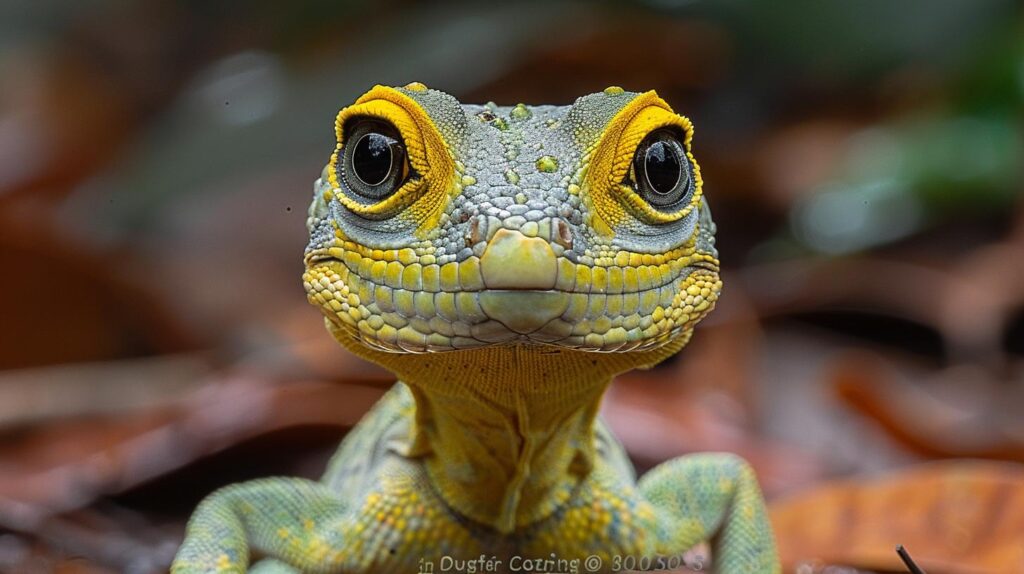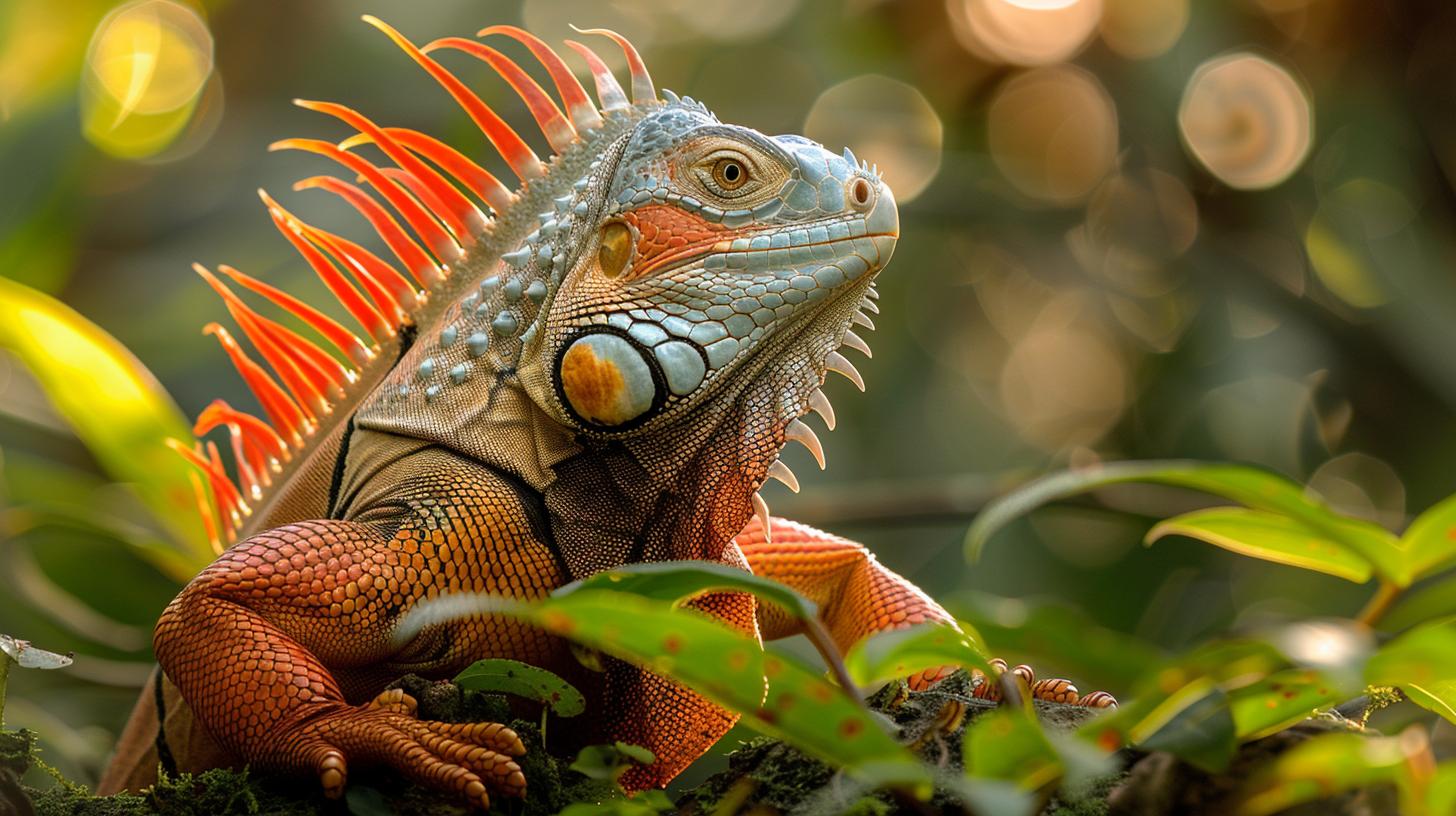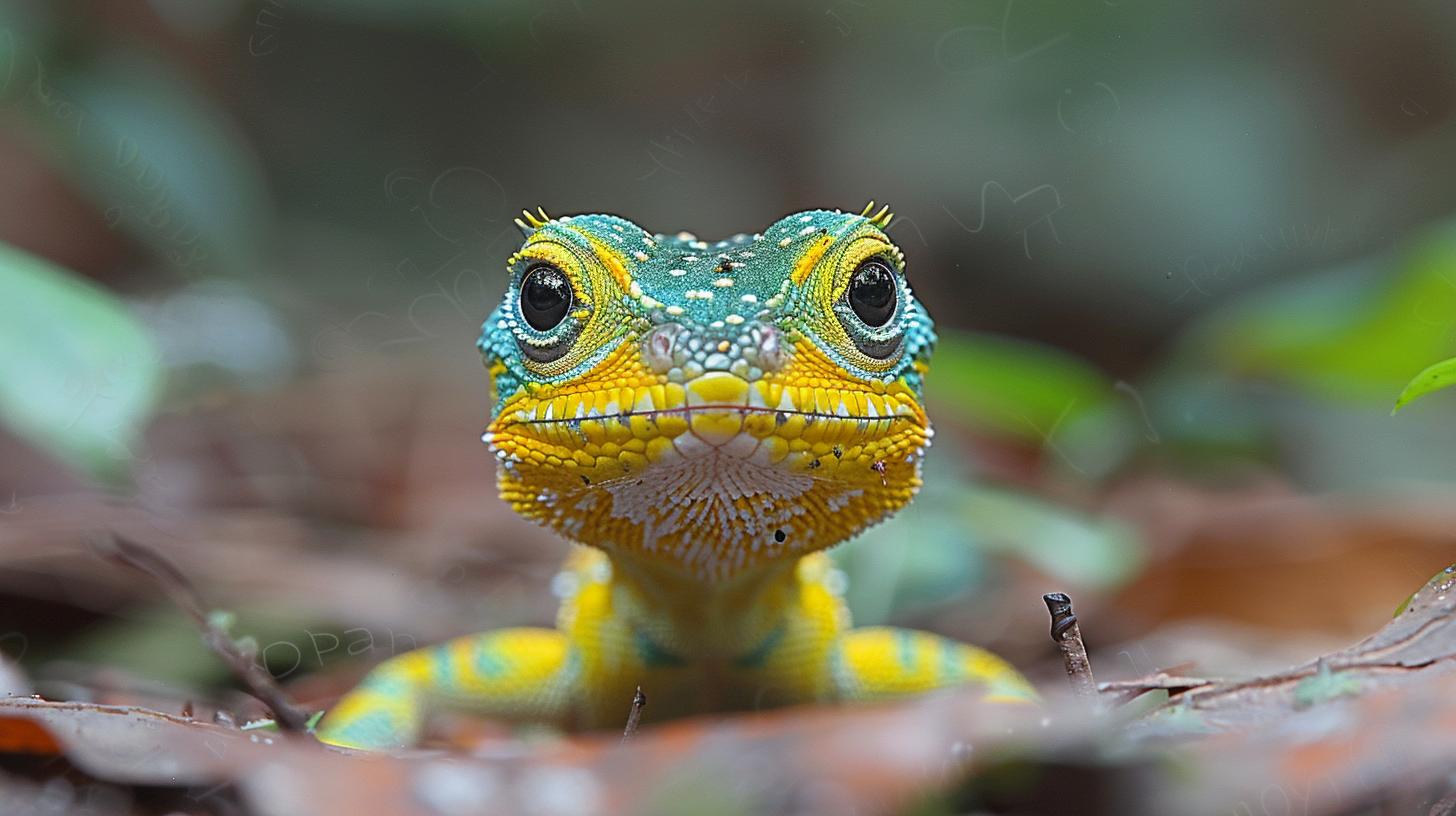7 Signs Your Reptile May Be Ill or Stressed

Introduction to Reptile Health and Wellness
Monitoring the health and wellness of your reptile pet is a crucial aspect of ensuring it leads a long, happy life. Reptile illness or stress can manifest in various subtle ways, often overlooked by those unfamiliar with these unique creatures' habits.
This introductory section sets the stage for delving into the importance of staying attuned to the signs that indicate your reptilian friend may be experiencing discomfort or distress. It underscores the interconnectedness of physical and mental well-being in reptiles, highlighting why vigilance is key in pet care.
A noticeable change in eating habits often acts as an early alarm that your reptile might be under the weather or experiencing undue stress. Whether there's a decline or surge in appetite, understanding what triggers these fluctuations is vital for any responsible reptile owner. Addressing such changes proactively can prevent potential health issues from escalating, showcasing why knowledge and observation are essential tools in maintaining reptile health.
Moreover, unusual behavior or shifts in activity levels serve as critical indicators that something may be amiss within their controlled environment. Reptiles, much like any other pets, have a baseline for normal behavior and activity that can vary significantly from one species to another. Recognizing these variations plays a pivotal role in identifying when your pet is signaling for help through its actions.
Physical signs of illness likewise provide tangible evidence of health issues that merit immediate attention. From discoloration and sores to shedding irregularities and abnormal feces, each symptom could herald more serious underlying conditions demanding prompt intervention. Beginning with an understanding of basic reptile health and wellness principles fortifies owners against unforeseen complications, laying the foundation for a robust approach to pet care rooted in prevention and responsiveness.
Changes in Eating Habits
When it comes to the health and happiness of your reptilian pet, one of the quickest markers for identifying issues is by observing changes in their eating habits. A deviation from their normal appetite could be an early warning sign pointing towards *reptile illness or stress.* Understanding these changes is crucial for any reptile owner who desires to maintain their pet's well-being.
Firstly, a decrease in appetite might not always signal a disease; it could also mean your pet is experiencing discomfort or stress within its environment. Factors such as a new habitat setup, fluctuations in temperature, or even the presence of other pets can significantly impact their desire to eat.
In contrast, an increase in appetite might seem less concerning at first but can be indicative of certain metabolic diseases or internal parasitic infections. Keeping track of these shifts can help identify potential problems early on.
Addressing changes in eating habits involves evaluating the environment and ensuring it meets your pet's specific needs for warmth, humidity, and quiet. If environmental adjustments do not improve your reptile's appetite or if you notice additional symptoms like weight loss, lethargy, or abnormal feces, it's time to consult with a veterinarian specialized in reptilian care. They can provide a thorough examination and diagnose underlying causes that may be affecting your pet's health.
| Symptom | Possible Cause |
|---|---|
| Decrease in Appetite | Stress, Environmental Changes |
| Increase in Appetite | Metabolic Diseases, Parasitic Infections |
Understanding these nuances regarding your reptile's eating patterns underscores the importance of regular observation and prompt action when anomalies arise. Identifying reptile illness or stress early on could make all the difference in managing your pet's health effectively.
Unusual Behavior or Activity Levels
Understanding how your reptile usually behaves plays a critical role in identifying when something might be wrong. Reptiles, much like any other pets, have their unique behavioral patterns and activity levels that are considered normal for their species. A sudden change in these could be an early indicator of reptile illness or stress.
It is essential, then, for pet owners to familiarize themselves with what is typical for their reptilian companion to effectively spot when things seem off. Whether it's a normally sociable bearded dragon suddenly becoming withdrawn or a typically active gecko showing lethargy, recognizing these shifts is the first step in addressing potential health issues.
Detecting Abnormal Reptile Behaviors
When monitoring your reptile's behavior, identifying deviations from their regular patterns is crucial. For instance, lethargy or decreased movement can be a sign of illness or discomfort in many reptile species. Conversely, increased aggression or irritability might not just be a change in temperament but could also suggest your pet is experiencing pain or distress.
Similarly, unusual behaviors such as repeated attempts to escape the enclosure may indicate that the environment is not meeting your reptile's needs, potentially leading to stress-related issues By staying observant of these changes, owners can take swift action towards identifying and mitigating the underlying causes of such disturbances.
Activity Level Fluctuations and Their Implications
A significant aspect of deciphering changes in behavior involves understanding alterations in activity levels. Both hyperactivity and a noticeable decline can signal problems that need addressing. In some cases, a drop in activity could point towards metabolic illnesses or even parasitic infections requiring medical attention.
On the flip side, if your usually calm reptile seems overly active or restless all of a sudden, it might be reacting to environmental stressors such as inadequate heating, humidity imbalances, or insufficient enclosure space. These fluctuations underscore the importance of maintaining an optimal habitat for your pet while being vigilant about any abnormalities that arise-underlining how physical wellbeing and comfort significantly influence behavioral health in reptiles.
Identifying and responding effectively to unusual behavior and activity level changes ensures you're providing the best care possible for your reptilian friend. Recognizing these signs promptly not only helps you make necessary adjustments to their living conditions but also determines when professional veterinary assistance might be required to tackle more severe health challenges they face.

Physical Signs of Illness
Recognizing the physical signs of illness in reptiles is a vital skill for any reptile owner. Unlike mammals, reptiles often do not show obvious indications of sickness until they are severely ill. This makes early detection all the more critical.
It requires a keen eye and an understanding of what is normal for your particular species of reptile. Physical symptoms can range from subtle changes, such as slight discoloration or irregular shedding, to more alarming signs like sores or unusual fecal matter. By familiarizing ourselves with these indicators, we can intervene quickly, potentially saving our pet from severe health issues.
It's essential to remember that many physical symptoms manifest due to underlying health problems. For example, reptile illness or stress can often lead to visible changes in skin condition or behavior. These outward signs are your pet's way of communicating that something is wrong internally, prompting a need for closer examination and possibly professional medical intervention.
Spotting Symptoms Early
Discoloration in reptiles can be one of the first visual cues that there's an underlying health issue. While some variations in color are normal and can occur due to temperature changes or mood swings, significant or abrupt alterations should raise concern. Similarly, sores on the body could indicate infections or contact irritation from their environment, requiring immediate attention.
Another classic indication involves problems with shedding Reptiles naturally shed their skin as they grow, but complications during this process-such as incomplete shedding or frequent shedding-can signal poor health. Issues like inadequate humidity levels or nutritional deficiencies often contribute to these difficulties but might also hint at more serious conditions.
Gastrointestinal Distress
Changes in a reptile's fecal matter offer critical clues about its well-being. Abnormalities such as diarrhea, constipation, or the presence of undigested food in feces suggest gastrointestinal disturbance that could stem from dietary issues, parasitic infections, or exposure to toxins within their habitat.
Moreover, an unexplained increase in water consumption may also point towards possible health concerns like kidney disease-a condition not immediately apparent without observing such subtle physiological shifts over time.
Understanding these signs and acting swiftly upon spotting them facilitates early diagnosis and treatment-greatly enhancing your reptile's chance for recovery. Careful monitoring for any deviations in physical condition coupled with regular veterinarian check-ups forms the cornerstone of proactive reptilian healthcare management.
Signs of Stress in Reptiles
Identifying stress in reptiles is imperative for their long-term health and well-being. While these creatures are known for their resilience and adaptability, they are not immune to the negative impacts of stress, which can manifest in various behavioral and physical symptoms. Recognizing these signs early on can make a significant difference in managing reptile illness or stress effectively.
One common indicator of stress is a change in typical behavior patterns. This might include an increase in aggression, such as hissing, biting, or puffing up when approached. On the other hand, some reptiles may become overly withdrawn, spending excessive time hiding or showing reluctance to interact with their environment or their owners. Behavioral changes are often the first clue that a reptile is experiencing discomfort or distress and requires further investigation to address any underlying issues.
In addition to behavioral signs, physical symptoms can also be telltale indicators of stress in reptiles. These might include:
- Rapid weight loss or gain
- Consistent shedding problems
- Signs of parasites (such as mites)
- Changes in skin coloration
It's crucial to monitor these physical aspects closely, as they often accompany more serious health concerns that could escalate if left unaddressed. Environmental factors play a significant role in the overall stress levels experienced by reptiles. Inappropriate temperatures, incorrect humidity levels, and cramped living spaces can all contribute significantly to reptile illness or stress. Ensuring your pet's habitat meets their species-specific needs is fundamental to maintaining their health and reducing stressors.
Crafting an optimal living space for your reptile involves several key elements:
- Providing adequate space for movement and activity
- Maintaining proper temperature gradients within the enclosure
- Ensuring suitable humidity levels that mimic their natural habitat
- Offering hiding places and environmental enrichment
By paying close attention to these aspects of care, along with regular observation of your reptile's behavior and physical condition, you can greatly diminish the chances of reptile illness or stress, fostering a healthier environment conducive to your pet's well-being.
As we continue exploring this topic, it becomes clear that understanding the nuanced signals our reptilian companions give us about their health requires attention and dedication from every pet owner. Observing behavior diligently and making necessary adjustments based on individual needs highlights the importance of nurturing a deep connection with these fascinating creatures for their ultimate care and happiness.
Environmental Factors and Their Impact
Reptiles are remarkable creatures that have adapted over millions of years to thrive in diverse environmental conditions. However, when it comes to captivity, creating an environment that closely mimics their natural habitat is fundamental for their health and well-being.
The significance of monitoring environmental factors such as temperature, humidity, and enclosure size cannot be overstated, as these elements play a pivotal role in preventing reptile illness or stress. This section delves into how inadequate environmental conditions can adversely affect your reptile's health, highlighting the need for diligent habitat management.

Temperature gradients within a reptile's enclosure are critical for their thermoregulation processes. In the wild, reptiles move between various microclimates to regulate their body temperature-a behavior that is essential for digestion, immune function, and overall activity levels.
A poorly managed thermal environment can lead to lethargy, weakened immune response, and even metabolic disorders. Maintaining appropriate temperature ranges specific to your pet's species is not just a recommendation; it's vital for averting potential health issues stemming from thermal stress.
Humidity levels are another cornerstone of a healthy reptilian habitat that demands attention. Both excessively dry conditions and overly humid environments can prompt a host of problems ranging from dehydration and dysecdysis (shedding difficulties) to fungal infections.
These conditions underscore a common dilemma faced by captive reptiles-it's incredibly easy for them to descend into states of discomfort or distress without visible warning signs until the problem has advanced. By understanding the natural humidity requirements of your reptile species and employing strategies such as misting systems or humidity trays, caretakers can mitigate risks associated with improper humidity levels.
Lastly, the size and complexity of the living space provided to a reptile play an instrumental role in its physical and mental well-being. Enclosures that are too small or lack environmental enrichment may not only cause physical ailments like muscle weakness but also contribute significantly to reptile illness or stress through psychological distress. Providing ample space for exercise and exploration alongside features such as hiding spots and climbing structures can greatly enhance the quality of life for these pets.
Together, these aspects of environmental control embody essential practices in ensuring the wellness of captive reptiles-underscoring the interconnectedness of physical health and mental well-being in these fascinating animals.
Professional Care and When to Seek It
In wrapping up our exploration of the 7 Signs Your Reptile May Be Ill or Stressed, we've journeyed through understanding the critical importance of recognizing and appropriately responding to indications of potential health issues in our reptilian companions. From acknowledging shifts in their eating patterns to identifying unusual behavior and physical symptoms indicative of distress or illness, it becomes clear that vigilance in observation is key to safeguarding the wellness of these intriguing pets.
Understanding when to seek professional care marks a pivotal step in responsible reptile ownership. It's not merely about reacting to symptoms but proactively ensuring that our scaly friends live in environments that mimic their natural habitats as closely as possible, thus minimizing incidences of reptile illness or stress. This focus reflects not just an adherence to best practices for pet care but a deep respect for these creatures as living beings with unique needs and behaviors.
As you continue on your journey with your reptilian companion, remember that early detection and intervention are paramount. Whether you're a seasoned reptile enthusiast or new to their care, there's always more to learn about creating the most enriching life possible for these animals.
We invite you to delve further into our comprehensive articles and resources designed to empower you with knowledge and inspiration for all aspects of pet care. Let's ensure together that our scaled friends thrive under our guardianship, providing them with lives full of health and happiness.
Frequently Asked Questions
What Are Four Signs of Illness or Disease in a Reptile?
Four indicators of illness or disease in a reptile include a change in eating habits, unusual feces, lethargy, and visible sores or discoloration on the skin. Changes in eating patterns can signal various health issues, while abnormal feces may suggest digestive problems.
Lethargy points towards a potential underlying condition affecting the reptile's energy levels, and sores or discolorations are often signs of infections or parasites.
What Are the Behaviors of Reptiles During Stress?
During stress, reptiles exhibit certain behaviors such as hiding more frequently than usual, showing aggression when they were previously docile, refusing food, and erratic movements or attempts to escape their enclosure. These behaviors point to discomfort or fear in their environment which requires attention to identify and alleviate the source of stress for the well-being of the reptile.
How Do You Know if a Lizard Is Stressed?
A lizard shows signs of stress through specific behaviors like excessive hiding, decreased appetite, skittishness when approached, and frequent attempts to escape its enclosure. You might also notice changes in its skin color—some species can change color based on their stress levels. Observing these behaviors closely helps in identifying that a lizard is not feeling secure within its habitat.
How Do You Assess Stress in Reptiles?
Assessing stress in reptiles involves careful observation of their behavior and physical state compared to their normal conditions. Signs such as increased agitation, reduced eating or basking time, frequent hiding, rapid breathing, or unusual aggressiveness can indicate stress. Understanding each species' specific needs and natural behavior is key to accurately determining if a reptile is experiencing stress.
What Is Dysecdysis in Reptiles?
Dysecdysis refers to an abnormal shedding process in reptiles where they have difficulty removing all or parts of their old skin effectively. This condition often arises from inadequate humidity levels, nutritional deficiencies, or underlying health problems. It can lead to complications like infections if not addressed promptly by creating an optimal shedding environment and seeking veterinary care when necessary.
What Are Some of the Signs of Ill Reptilian Health?
Signs of ill health in reptiles include lack of appetite or altered feeding habits indicating possible internal issues; irregularities on the skin such as sores, patches of dry scales indicating infections; labored breathing which could signal respiratory problems; and lethargic behavior along with an unusual posture that suggest discomfort or pain.
Monitoring these signs closely enables early detection of health issues for timely intervention.
Leave a Reply
You must be logged in to post a comment.